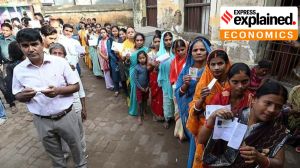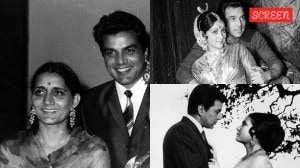‘The silence (of Kashmiris) shaped the book as much as the stories themselves’: Ipsita Chakravarty on her debut book Dapaan
The conversation traced Chakravarty’s journey from her first reports in 2016, in the wake of Burhan Wani’s killing, to the silence she encountered when she began researching the book in 2022.
 Journalist Ipsita Chakravarty launches her debut book Dapaan: Tales from Kashmir’s Conflict at Jawahar Bhawan, published by Westland Books. (Express Photo)
Journalist Ipsita Chakravarty launches her debut book Dapaan: Tales from Kashmir’s Conflict at Jawahar Bhawan, published by Westland Books. (Express Photo) At Jawahar Bhawan on Tuesday evening, journalist Ipsita Chakravarty launched her debut book Dapaan: Tales from Kashmir’s Conflict, published by Westland Books. The discussion, organised in partnership with Nehru Dialogues, brought Chakravarty into conversation with independent journalist Safina Nabi and academic Nishita Trisal.
The title of the book comes from the Kashmiri word Dapaan, meaning “it is said.” Chakravarty explained how the phrase has long carried weight in the Valley: “Saying ‘it is said the army came last night’ is safer than ‘I saw it happen.’ It distances you from direct witness. Over time, Dapaan entered everyday speech. Sometimes it was playful, but its origins lie in fear and survival.”
The conversation traced Chakravarty’s journey from her first reports in 2016, in the wake of Burhan Wani’s killing, to the silence she encountered when she began researching the book in 2022. “Back then, people wanted to talk. They wanted their side of the story out,” she recalled. “But when I returned years later, they often asked, ‘Why should we tell you anything? What’s the point?’ That silence shaped the book as much as the stories themselves.”
‘Hundreds of journalists were forced into a govt centre’
Safina Nabi reflected on her own challenges as a local journalist after the abrogation of Article 370 in August 2019, when communication was cut off. “Hundreds of journalists were forced into one government media facilitation centre with just a few computers,” she said. “With no internet, no phones, even filing a story became an act of endurance. We had to invent ways to keep reporting, often in whispers, in fragments.”
 The title of the book comes from the Kashmiri word Dapaan, meaning “it is said.”
The title of the book comes from the Kashmiri word Dapaan, meaning “it is said.”
The discussion also turned to questions of representation and responsibility. “I cannot pretend to have complete knowledge of Kashmiri lives,” Chakravarty admitted. “What I can do is listen, record, and acknowledge that my understanding will always remain partial. Writing from that gap is part of the ethic of the book.”
In its structure, Dapaan mirrors Kashmir’s layered temporality — moving from oral storytelling traditions and folk theatre to the losses of the 1990s, the turbulence of 2016, and the eerie quiet of the present. What emerges is not a single narrative, but a chorus of voices, sometimes fractured, sometimes humorous, always insistent on their right to be heard.



- 01
- 02
- 03
- 04
- 05




























